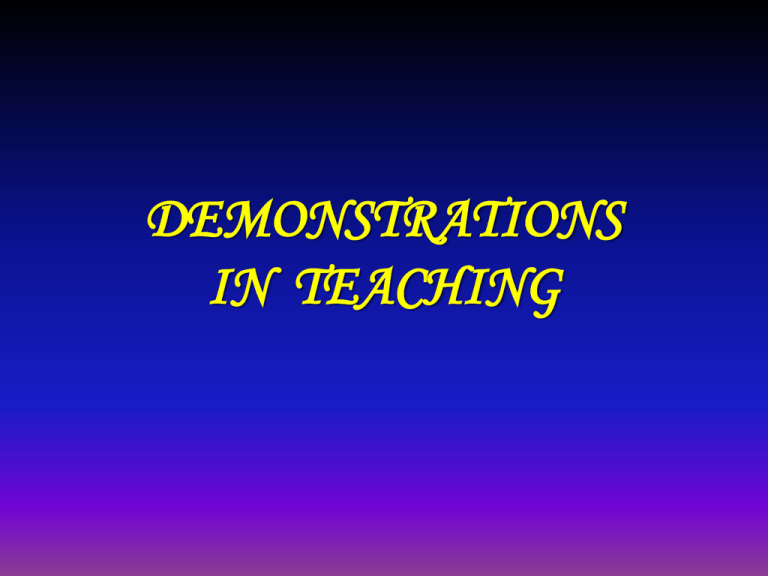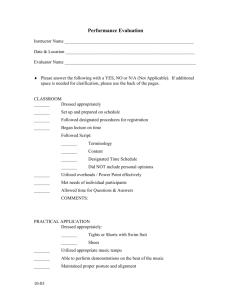Demonstrations in Teaching
advertisement

DEMONSTRATIONS IN TEACHING Relation characterized by harmony Conspicuous, Noteworthy Speak or Act in a blundering or clumsy manner To pull out RAP P ORT S ALI ENT S T U MB L E DRAG OU T Demonstration “ A public showing and emphasizing of the salient merits, utilities,efficiency, etc, of an article or product. “ -Webster’s International Dictionary Showing how a thing is done and emphasizing of the salient merits, utility, and efficiency of a concept, a method or a process or an attitude. Edgar Dale’s (1969) Guiding principles that must be observed in using demonstrations as a teaching learning experience 1. Establish Rapport. 2. Avoid the COIK Fallacy (Clear Only If Known) 3. Watch for key points. Methodical Procedures in Preparing and Planning for Demonstration (Brown 1969) 1. What are our objectives? 2. How does your class stand with respect to these objectives? 3. Is there a better way to achieve your ends? 4. Do you have access to all the necessary materials and equipment to make the demonstration? 5. Are you familiar with the sequence and content of the propose demonstration? 6. Are the time limits realistic? Points to observe during the demonstration (Dale 1969) 1. Set the tone for good communication. 2. Keep your demonstration simple. 3. Do not wander from the main ideas. 4. Check to see that your demonstration is being understood. 5. Do not hurry your demonstration. 6. Do not drag out the demonstration. 7. Summarize as you go along and provide a concluding summary. 8. Hand out writtten materials at the conclusion. Questions to evaluate classroom demonstrations. (Dale 1969) Was your demonstration adequately and skillfully prepared? Did you follow the step-by-step plan? Did you make use of additional materials appropriate to your purposes? Was the demonstration itself correct? Was your explanation simple enough so that most of the students understood it easily? Did you keep checking to see that all your students where concentrating on what you were doing? Could every person see and hear? Did you help students do their own generalizing? Did you take enough time to demonstrate key points? Did you review and summarize the key points? Did your students participate on what your doing by asking thoughtful questions at the appropriate time? Did your evaluation of student learning indicate the your demonstration achieve its purpose?











